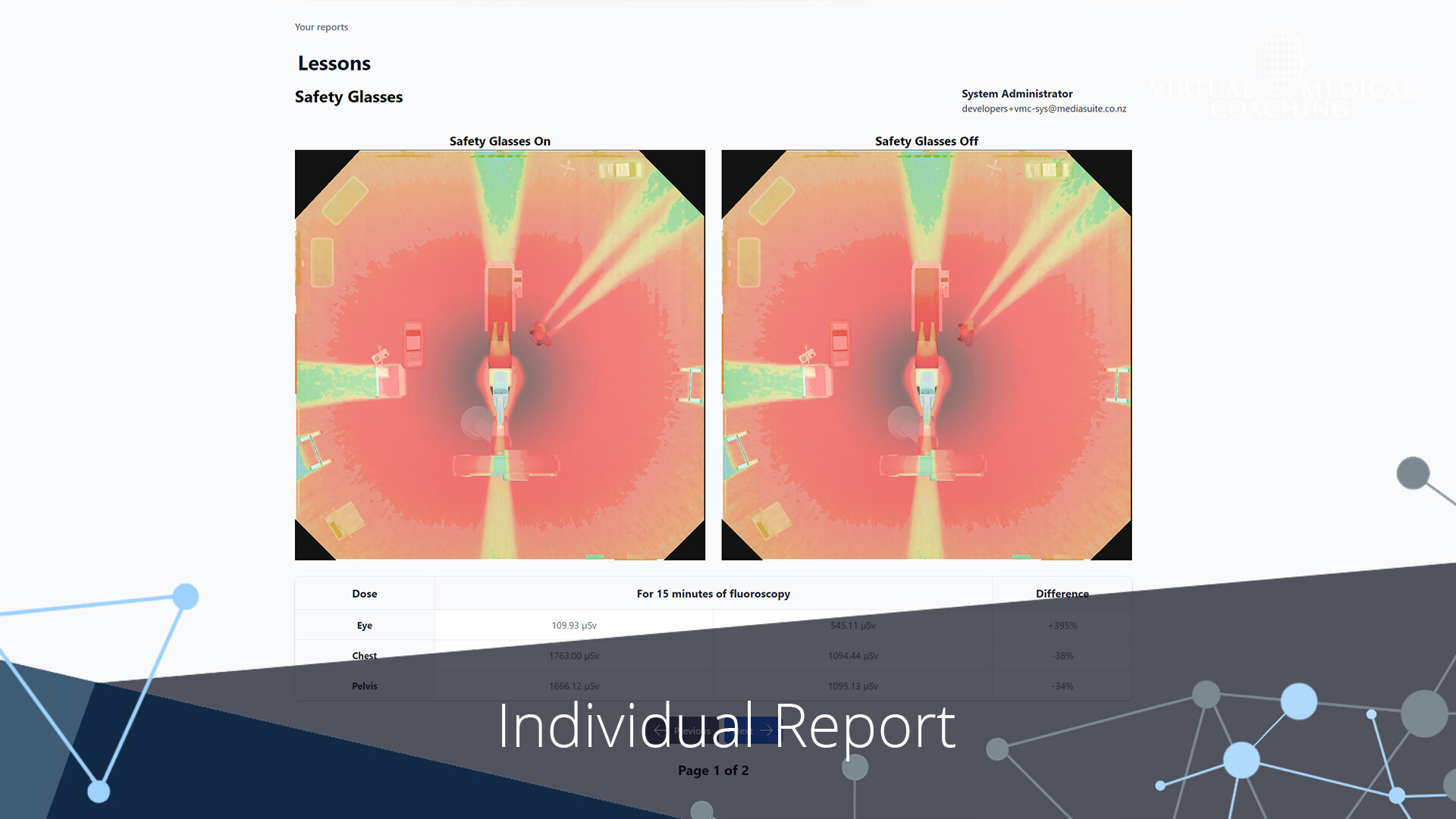Tl;dr
The potential for radiation exposure has become a significant concern with the increasing use of imaging technology in the operating theater (OR) and interventional radiology suite (IR).
Our upcoming webinar aims to highlight the critical role of education in protecting healthcare professionals and radiation safety in the operating theatre and cath lab settings.
Understanding Occupational Radiation Exposure
Healthcare professionals, particularly those working in operating theatres, interventional radiology (IR), and cath labs, are frequently exposed to ionizing radiation. This exposure primarily comes from diagnostic and therapeutic procedures involving fluoroscopy and other radiographic technologies. While these tools are indispensable for patient care, they pose inherent risks to the staff, including radiation-induced injuries and an increased risk of cancer.
The Challenges of Teaching Radiation Safety
Radiation safety is a complex subject to teach for several reasons:
-
Invisible Danger:
- Unseen Threat: Unlike visible physical hazards, radiation is invisible, making it harder for staff to recognize when they are at risk. This invisibility often leads to a lower perceived threat and less immediate attention to safety protocols.
- Delayed Effects: The harmful effects of radiation exposure, such as cancer or other health issues, can take years or even decades to manifest. This delayed onset makes it challenging to link exposure to adverse outcomes directly and to emphasize the urgency of strict safety measures.
-
Complex Principles:
- Technical Jargon: Radiation safety involves understanding complex scientific concepts and technical jargon, which can be intimidating for many healthcare professionals. Simplifying these concepts without losing their essence is crucial for effective training.
- Dynamic Environments: Operating theatres and cath labs are dynamic, fast-paced environments where maintaining safety protocols can be challenging amidst the urgency of patient care. Teaching staff to integrate safety practices seamlessly into their routines is essential.
-
Behavioral Change:
- Cultural Shift: Promoting a culture of safety requires changing long-established behaviors and attitudes. Staff need to prioritize radiation safety consistently, which involves regular training, reinforcement, and support from leadership.
- Continuous Learning: Radiation safety is not a one-time training but a continuous learning process. Regular updates, refresher courses, and staying informed about the latest safety guidelines are necessary to maintain high safety standards.
The Importance of Radiation Safety Education
-
Awareness and Knowledge:
- Understanding Radiation: Comprehensive education equips staff with the knowledge to understand the nature and risks of radiation. This includes knowing how radiation interacts with tissues and the potential long-term health effects.
- Regulations and Guidelines: Familiarity with safety regulations and guidelines, such as those provided by the International Commission on Radiological Protection (ICRP) and local regulatory bodies, is crucial for maintaining a safe working environment.
-
Implementation of Safety Protocols:
- Shielding and Protective Equipment: Education ensures that staff are proficient in the use of protective gear, such as lead aprons, thyroid shields, and lead glasses. It also emphasizes the importance of using shielding devices effectively.
- Optimizing Exposure Parameters: Training on how to adjust imaging parameters to minimize radiation doses without compromising diagnostic quality is essential. This includes understanding the principles of ALARA (As Low As Reasonably Achievable).
-
Operational Techniques and Best Practices:
- Positioning and Distance: Proper training helps staff to adopt techniques that reduce exposure, such as maintaining an appropriate distance from the radiation source and proper positioning during procedures.
- Time Management: Effective education promotes the efficient use of time to reduce the duration of exposure. This includes streamlined procedural workflows and minimizing unnecessary radiation use.
-
Monitoring and Reporting:
- Dose Monitoring: Education about the importance of personal dosimetry ensures that staff regularly monitor their radiation exposure levels. Understanding how to interpret dosimetry reports and take corrective actions is critical.
- Incident Reporting: Training programs encourage a culture of safety where staff feel comfortable reporting radiation incidents or near-misses, leading to continuous improvement in safety practices.
Upcoming Webinar on Radiation Safety

To address these critical aspects and more, we are excited to announce our upcoming webinar on occupational radiation safety tailored specifically for operating theatre and cath lab staff. This webinar will provide a comprehensive overview of radiation safety principles, practical tips for minimizing exposure, and the latest advancements in protective technologies.
Webinar Highlights:
- Expert insights from leading radiation safety professionals.
- Interactive sessions on best practices and case studies.
- Q&A segments to address specific concerns and scenarios.
6 pm EST 18th June 2024
https://solutions.virtualmedicalcoaching.com/radiation-safety-webinar-june-2024
The importance of education in occupational radiation safety cannot be overstated. By empowering operating theatre and cath lab staff with the knowledge and skills needed to protect themselves, we safeguard their health and enhance the overall quality of patient care. Our software provides easy-to-understand practical lessons that ensure staff can effectively apply safety protocols in real-world settings.
We invite all healthcare professionals involved in radiographic procedures to join our webinar and take an active role in promoting a safer working environment. Stay informed, stay protected, and join us in making radiation safety a priority.